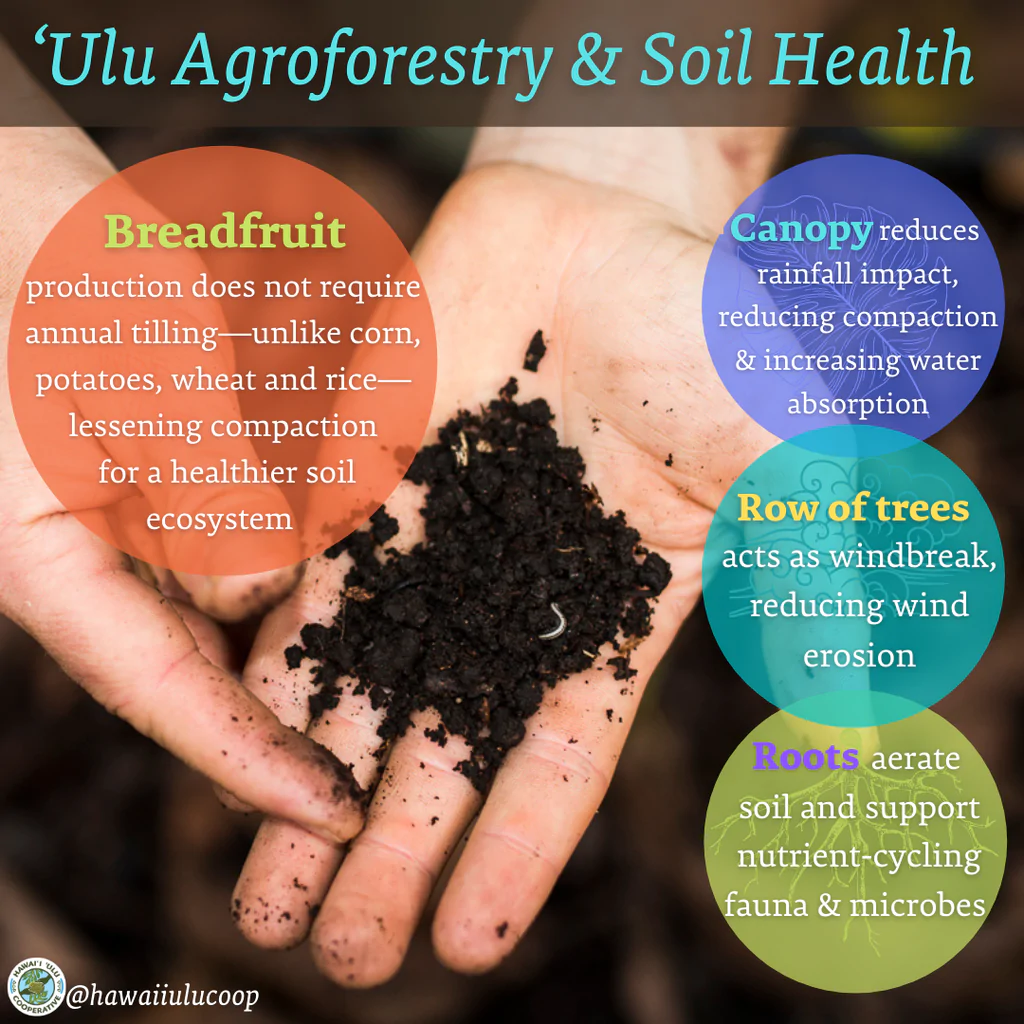ROOTS-TO-REEF: Breadfruit Trees Protect Our Oceans
Soil erosion and runoff are especially concerning for us in Hawai‘i because our runoff flows directly into streams and quickly enters the ocean, negatively affecting coral reefs and marine ecosystems. Understanding how breadfruit agroforestry can contribute to soil health is crucial in developing a sustainable future for Hawai‘i.
Deep Roots Improve Soil
Breadfruit trees grow deep root systems, aerating the soil and providing structure for nutrient-cycling fauna and microbes. Fruiting for 100 years or more, breadfruit is different from short-term staples like corn, potatoes, wheat and rice grown in conventional systems where soil may be tilled multiple times in a year. This tilling breaks up microbial ecosystems and hides a compacted layer of dirt below the soil that prevents root systems from growing deeper, making plants less resistant to drought and less capable of accessing nutrients. Thanks to ‘ulu’s active roots, soil life, structure and productivity are protected.
Full Canopy Preserves Water
The leaves and canopy of ‘ulu lessen rainfall impact on the ground, reducing soil compaction. Less compacted soils more easily allow rain to soak into the ground rather than run off in streams like water hitting a hard tin roof. And on hot sunny days, ‘ulu leaves shade the soil, slowing down the evaporation and loss of precious moisture. In the face of more frequent droughts, ‘ulu trees increase water efficiency to help us make every drop count.
Tall Friends Break Up Winds
A row of breadfruit trees acts as a natural windbreak, breaking up strong winds which have the potential to pick up and erode soil. Wind erosion is considered a major threat to agriculture because it strips away the most fertile parts of the soil: clays and organic matter. Wind-blown soil also causes air and water pollution. Conserving soil and preventing pollution is a major plus of ‘ulu agroforestry!
As we look for sustainable solutions to mitigate soil degradation, there are few options better than planting breadfruit as a staple crop. Packed with the vitamins, minerals and nutrients our bodies need, ‘ulu is proof that when we care for the land, the land cares for us.
Interested in ordering frozen, recipe-ready Hawai’i Grown Starches? Check out our online store.
Sources:
Hoorman, J. et al., (2011). “The Biology of Soil Compaction,” American Society of Agronomy.
Kucera, M. “Wind Erosion.” USDA Natural Resources Conservation Service.
Ontl, T. A. & Schulte, L. A. (2012) Soil Carbon Storage. Nature Education Knowledge 3(10):35

